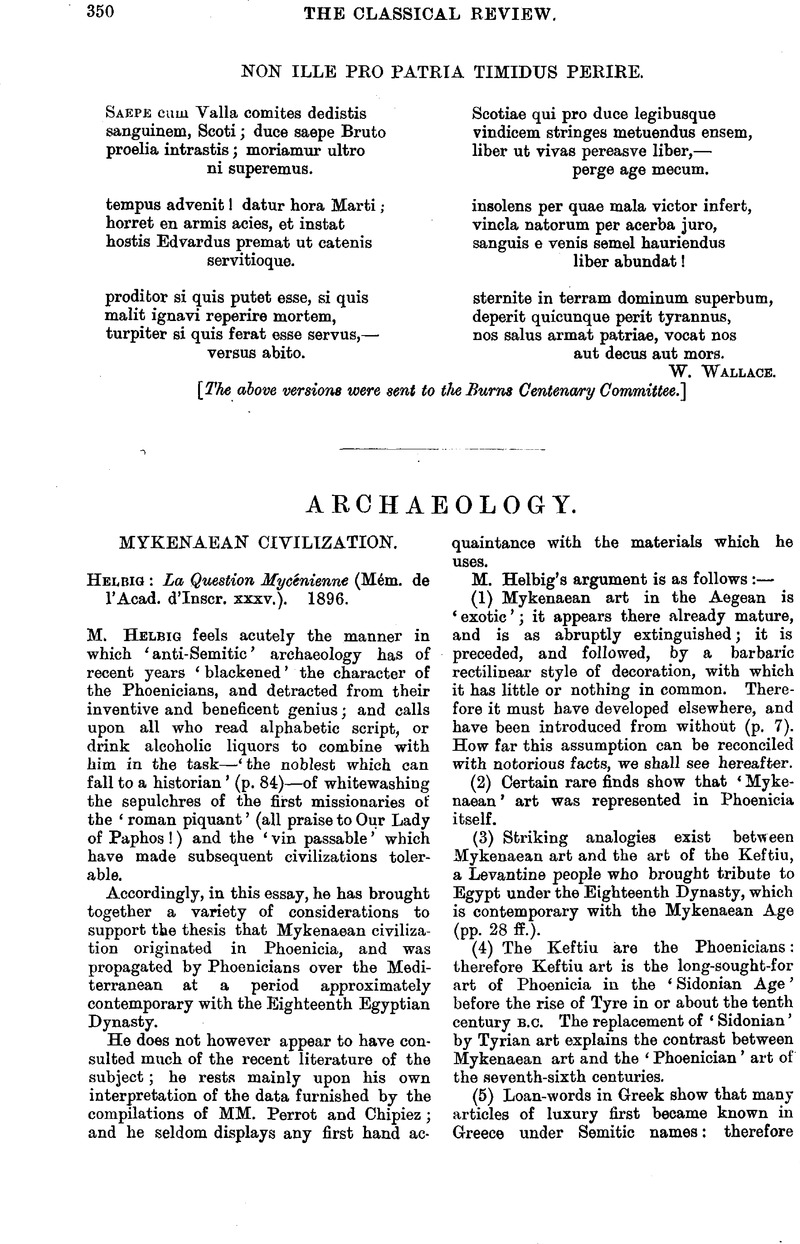No CrossRef data available.
Published online by Cambridge University Press: 27 October 2009

page 351 note 1 Here Mykenaean art has a continuous and indigenous descent from the culture of the early Bronze Age, and passes by insensible degrees back to a point, barely removed from the end of the Neolithic Age, where it joins, through the Hissarlik type, with the Cypriote Bronze Age culture, which however pursues a very different and peculiar career. Intermediate, and by no means early stages of this development can now be dated, on Cretan evidence, to the time of the Twelfth Egyptian Dynasty (Evans, ‘Cretan Pictographs,’ p. 57 ff.; J.H.S. xiv. 326 ff.; Myres, Proc. Soc. Antiq. 2nd ser. xv. p. 351 ff.; Mariani, Mon. Antichi, 1896): and consequently the beginning of the process must far antedate any known data for Phoenician industry and commerce.
page 355 note 1 Fig. 13.= Perrot. vi. fig. 351 = Tσοντας. Mυκναι, PL xi. M. Helbig refers to this as from ‘Abbia,’ following (as usual) M. Perrot. M. Tsountas always refers to it by the more accurate place-name Kμπος: Aβια is the ‘demo’ of Lakonia in which Kμπος lies.
page 356 note 1 Evans, J.H.S. xiv. 367 ff.
page 356 note 2 Od. xiv. 288 ff. is not reckoned, because the voyage was to be to Libya. 1. 295.